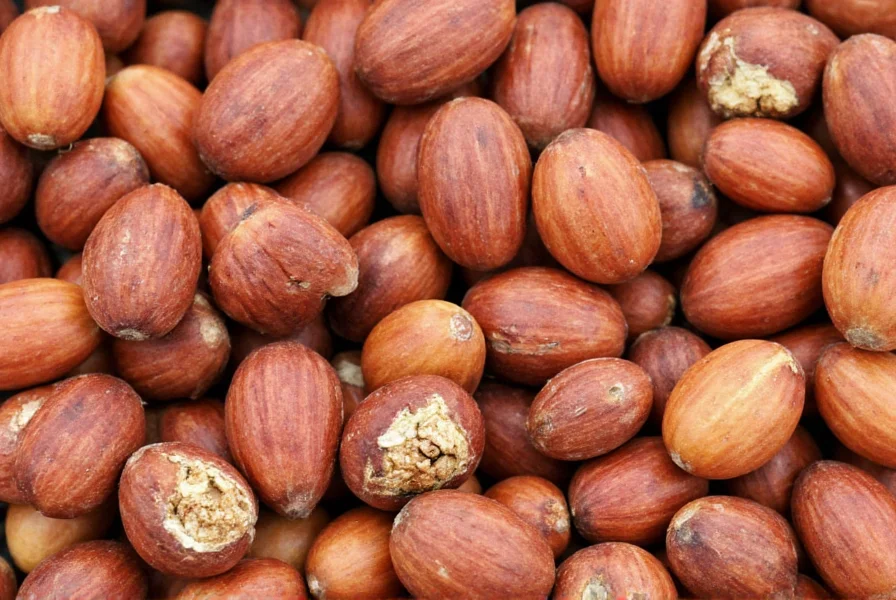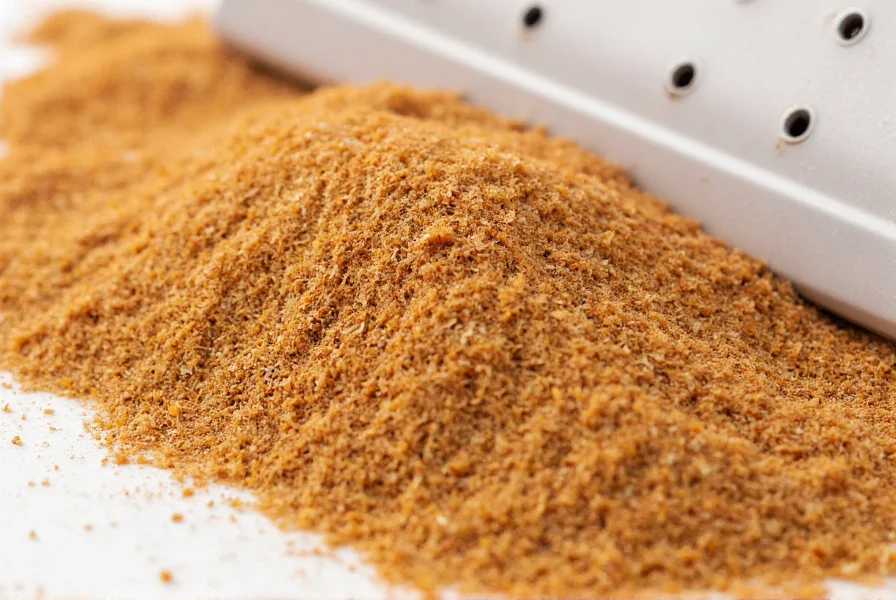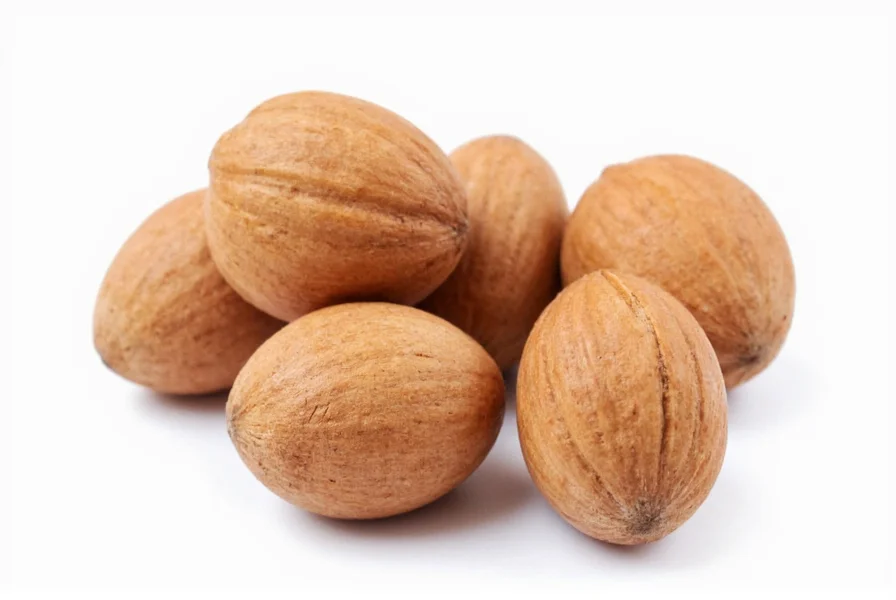Nutmeg seed represents one of the world's oldest and most valued spices, with historical significance spanning centuries of global trade. Unlike pre-ground versions found in most supermarkets, the whole seed preserves maximum flavor compounds and essential oils that begin degrading immediately after grinding. Understanding the proper use and handling of nutmeg seeds separates amateur cooking from professional culinary technique.
Botanical Origins and Harvesting Process
The Myristica fragrans tree produces fruit that splits open when ripe, revealing the precious seed encased in a crimson aril. Harvesters collect these fruits before they fully split, then carefully remove the outer fleshy layer. The seed with its aril intact undergoes sun-drying for several weeks, during which the aril shrinks and can be separated to produce mace. The remaining seed continues drying until it rattles inside its hard shell, becoming what we recognize as whole nutmeg.

Culinary Applications of Whole Nutmeg Seed
Chefs prize whole nutmeg seeds for their superior flavor profile compared to pre-ground alternatives. When freshly grated using a microplane or nutmeg grater, the seed releases volatile oils that provide warm, slightly sweet, and nutty notes with subtle peppery undertones. These characteristics make nutmeg seed indispensable in both sweet and savory applications:
- Baking - Essential in spice cakes, pumpkin pies, and holiday cookies
- Savory dishes - Perfect for béchamel sauces, mashed potatoes, and root vegetable preparations
- Preservation - Historically used to extend the shelf life of dairy products
- Beverages - Traditional addition to eggnog and mulled wines
| Characteristic | Whole Nutmeg Seed | Pre-Ground Nutmeg |
|---|---|---|
| Flavor intensity | Bright, complex, aromatic | Muted, one-dimensional |
| Shelf life | 2-3 years when properly stored | 6-12 months |
| Essential oil content | 100% (intact) | 30-50% (degraded) |
| Culinary versatility | Superior for precise flavor control | Limited by inconsistent quality |
Nutritional Composition and Health Considerations
Nutmeg seed contains several bioactive compounds including myristicin, elemicin, and safrole. A single teaspoon (2g) of freshly grated nutmeg provides:
- Approximately 12 calories
- 1g dietary fiber
- Significant manganese (20% of daily value)
- Moderate copper and magnesium
- Trace amounts of iron and vitamin B6
While small culinary amounts offer potential digestive benefits and anti-inflammatory properties, excessive consumption presents serious health risks. The myristicin content becomes problematic at doses exceeding 5g (about 2.5 teaspoons of grated nutmeg). Documented cases show that consuming 10g or more can cause nutmeg poisoning with symptoms including:
- Severe dizziness and disorientation
- Increased heart rate and blood pressure
- Nausea and vomiting
- Visual and auditory hallucinations
- Delirium lasting up to 48 hours
Medical professionals warn that nutmeg seed toxicity should never be underestimated, as individual reactions vary significantly based on metabolism and body weight. Pregnant women should particularly limit consumption due to potential uterine stimulation effects.

Selection, Storage, and Preparation Techniques
When selecting whole nutmeg seeds, look for plump, heavy specimens with a uniform brown color and no visible cracks. High-quality seeds should feel dense and produce a slight rattle when shaken, indicating proper drying. Avoid seeds with mold spots or musty odors.
Proper storage maintains nutmeg seed quality for up to three years. Keep seeds in an airtight container away from light, heat, and moisture. Whole seeds retain their volatile oils significantly longer than pre-ground versions, which lose up to 75% of their aromatic compounds within six months.
For optimal flavor release, always grate nutmeg seeds immediately before use. A microplane zester works best for creating fine, even shavings that incorporate smoothly into dishes. When recipes call for "a pinch of nutmeg," this typically equals about 1/16 teaspoon of freshly grated seed. Remember that nutmeg's flavor intensifies with cooking time, so add it early in long-simmering dishes but near the end for delicate preparations.
Historical Significance and Global Trade
Nutmeg seed once commanded prices equivalent to gold in European markets during the 16th and 17th centuries. The Dutch went to extraordinary lengths to maintain their monopoly over the Banda Islands, even destroying nutmeg trees on other islands to control supply. This historical context explains why nutmeg features prominently in traditional recipes across Dutch, Indonesian, and Caribbean cuisines.
Today, Indonesia remains the largest producer of nutmeg seeds, followed by Grenada in the Caribbean, which features the spice prominently on its national flag. The global nutmeg trade continues to follow seasonal patterns, with harvests occurring twice yearly in most growing regions.
Common Questions About Nutmeg Seed
What's the difference between nutmeg seed and mace?
Nutmeg seed refers to the inner kernel of the Myristica fragrans fruit, while mace is the lacy red aril that surrounds the seed. Though they come from the same fruit, they have distinct flavor profiles - nutmeg is sweeter and warmer, while mace has more delicate, citrusy notes. Both are used extensively in global cuisines but serve different culinary purposes.
How much nutmeg seed is safe to consume daily?
For culinary use, 1/4 to 1/2 teaspoon (0.5-1g) of freshly grated nutmeg seed per day is considered safe for most adults. Consuming more than 5g (approximately 2.5 teaspoons) can cause adverse effects due to myristicin content. Individuals with liver conditions or those taking certain medications should consult healthcare providers before regular consumption.
Why is freshly grated nutmeg seed superior to pre-ground?
Freshly grated nutmeg seed retains 100% of its volatile essential oils, which begin evaporating immediately after grinding. Pre-ground nutmeg loses up to 50% of its aromatic compounds within weeks of packaging. The flavor difference is substantial - whole seeds provide brighter, more complex notes while pre-ground versions often taste flat and one-dimensional due to oxidation and oil degradation.
Can nutmeg seed go bad or expire?
Whole nutmeg seeds don't technically expire but gradually lose potency. Properly stored in an airtight container away from light and moisture, they maintain optimal flavor for 2-3 years. Signs of deterioration include diminished aroma, lighter color, and failure to produce a slight rattle when shaken. While not harmful, degraded seeds provide significantly less flavor impact in culinary applications.
What are traditional medicinal uses of nutmeg seed?
Traditional medicine systems have used nutmeg seed for digestive issues, insomnia, and pain relief. Some cultures prepare small amounts (¼ teaspoon) in warm milk as a sleep aid. However, modern research shows limited evidence supporting these uses, and the potential risks of higher doses mean nutmeg should not replace conventional medical treatments. Always consult healthcare professionals before using nutmeg for medicinal purposes.











 浙公网安备
33010002000092号
浙公网安备
33010002000092号 浙B2-20120091-4
浙B2-20120091-4